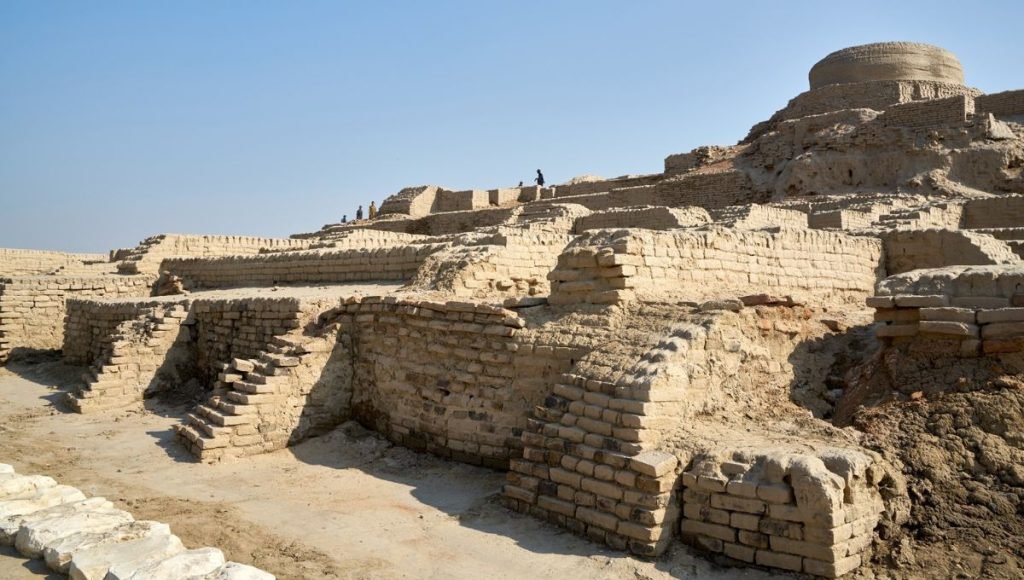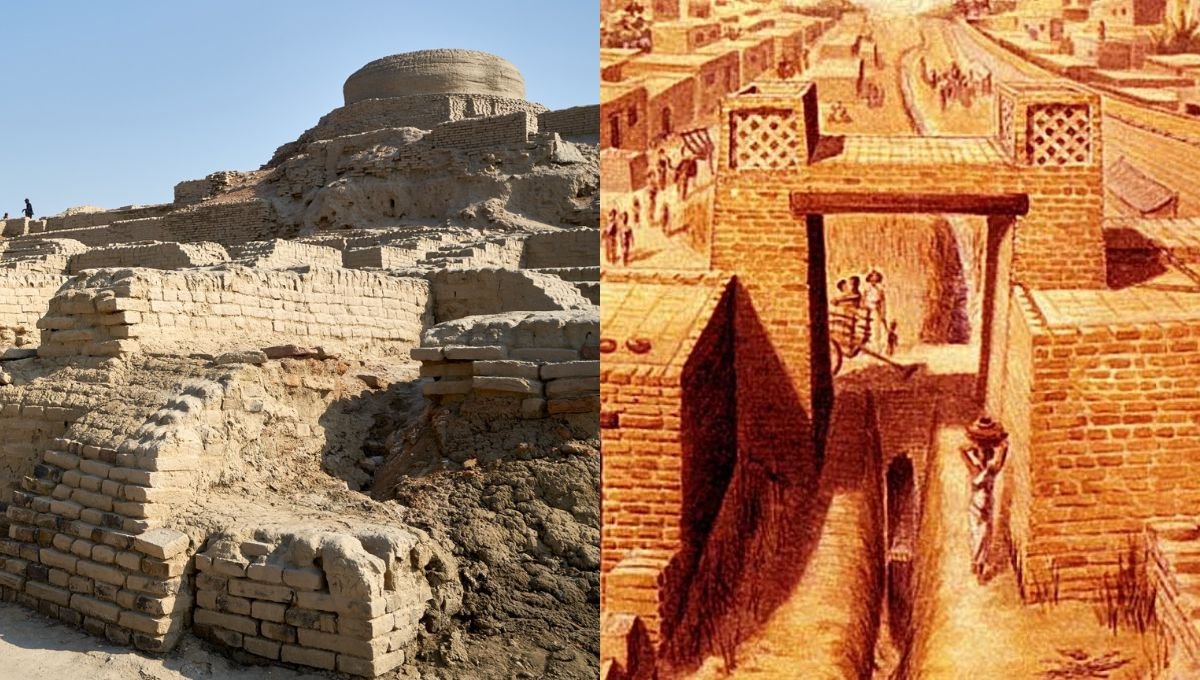Delving into the depths of the past, the Indus Valley Civilization continues to captivate with its enigmatic allure and profound significance. Flourishing between approximately 2600 BCE and 1900 BCE, this ancient civilization remains one of the world’s earliest and most advanced societies. Nestled along the fertile banks of the mighty Indus River, the civilization’s urban centers, exemplified by Harappa and Mohenjo-Daro, boasted impressive urban planning, advanced sanitation systems, and evidence of sophisticated craftsmanship.
Unraveling the mysteries of this ancient past not only sheds light on the remarkable achievements of our ancestors but also offers valuable insights into the foundations of human civilization. By deciphering their language and script, we hope to unlock the secrets of their culture, governance, and spiritual beliefs. Understanding the Indus Valley Civilization’s decline may also offer vital lessons for our own time. As we explore this remarkable chapter in history.
The Indus Valley Civilization
Origins of The Indus Valley Civilization

In the Indus Valley Civilization, it is evident that the geographical context played a pivotal role in its development. The Indus River, a lifeline of this ancient civilization, nurtured the growth of its settlements and facilitated agricultural prosperity. The river’s regular flooding cycles enriched the surrounding lands, making them fertile and conducive to agriculture, which laid the foundation for a stable and thriving society.
Archaeological discoveries and excavations have been crucial in unraveling the mysteries of this fascinating civilization. The major sites of Harappa and Mohenjo-Daro have yielded remarkable insights into the urban planning, advanced sanitation systems, and artistry of the ancient Indus people. Besides these key sites, numerous other archaeological excavations across the region have unearthed evidence of an extensive trade network, sophisticated craftsmanship, and a complex societal structure.
Establishing the dating and chronology of the civilization has been a challenging task for researchers. However, with advancements in dating techniques, such as carbon dating and stratigraphic analysis, we have made significant strides in understanding the timeline of this civilization. The current understanding places its flourishing between approximately 2600 BCE and 1900 BCE. By piecing together these puzzle pieces, we inch closer to comprehending the enigmatic origins of the Indus Valley Civilization and its enduring impact on human history.
Key Features and Achievements
Delving into the key features and achievements of the Indus Valley Civilization, it becomes evident that this ancient society was remarkably advanced in various aspects. Urban planning and sophisticated architecture stand out as a testament to their ingenuity. The cities of Harappa and Mohenjo-Daro, with their meticulously planned layouts and well-organized streets, showcased a high level of urban development. Moreover, their mastery of sewage and drainage systems reflects an early understanding of sanitation and urban hygiene.
The Indus Valley Civilization thrived on a robust trade and economy. Evidence reveals extensive trading networks, connecting them with regions as distant as Mesopotamia and Central Asia. The civilization’s prosperity was sustained by their adeptness in long-distance trade, facilitating the exchange of goods and ideas across vast territories.
In the domain of agriculture and food production, the Indus people displayed innovative techniques and cultivated a diverse range of crops. Sophisticated irrigation systems were utilized to maximize agricultural yields, ensuring food security for their burgeoning population. The presence of well-designed granaries speaks to their organizational skills and their preparedness for potential food shortages.
Art and craftsmanship were integral to their culture, with exquisite pottery and craftwork reflecting their artistic prowess. The artifacts discovered reveal a rich array of artistic expression and symbolic representations, which likely held cultural and religious significance. The Indus Valley Civilization’s artistic achievements not only showcase their creativity but also provide valuable insights into their beliefs and social customs.
Society and Governance
The society and governance of the Indus Valley Civilization, it is evident that this ancient civilization operated under a well-defined social structure and governance system. The society was structured into distinct classes and professions, with evidence pointing to the existence of a hierarchical order. Priests, rulers, and common people occupied different roles within this structure, with rulers likely holding significant authority and responsibility in governing the cities.
Religion and belief systems played a crucial role in the lives of the Indus people. Archaeological findings suggest the presence of various deities and religious practices, indicating a belief in a higher power and the significance of spirituality in their lives. Evidence of rituals and ceremonies underscores the importance of religious observances, likely influencing aspects of their daily routines and social interactions.
Regarding governance and administration, scholars continue to speculate on the political organization of the civilization. The absence of deciphered texts makes it challenging to pinpoint the exact administrative structure, but certain clues suggest a sophisticated system. Indications of centralized authority, as seen in the uniformity of city layouts and standardization of weights and measures, suggest the presence of a central governing body that may have played a key role in coordinating affairs across the region.
Studying the society and governance of the Indus Valley Civilization not only sheds light on the structure and functioning of this ancient civilization but also provides insights into the complexities of human societies and governance systems in the ancient world. As we piece together the fragments of their societal norms and administrative practices, we gain a deeper appreciation for the remarkable achievements and organization of this enigmatic civilization.
Language and Script
Exploring the language and script of the Indus Valley Civilization, one encounters an enduring enigma in the form of the Indus Script. This ancient script, found on numerous artifacts and seals, remains undeciphered despite decades of scholarly efforts. The Indus Script poses a tantalizing challenge, leaving researchers with numerous speculations and theories about its possible meaning and purpose. Various linguistic experts and archaeologists have dedicated themselves to deciphering this script, drawing from comparisons with other ancient languages, statistical analyses, and contextual clues. However, the lack of a bilingual script or a Rosetta Stone-like discovery continues to hinder progress.
The role of language in understanding a civilization’s history is of paramount importance. Deciphering the script could unlock a wealth of information about the society’s religious beliefs, governance, trade, literature, and daily life. It could potentially provide insights into the thoughts and expressions of the Indus people and their connections with neighboring cultures. Until the script is deciphered, the study of language in the context of the Indus Valley Civilization remains a crucial and intriguing aspect, promising to unravel more mysteries and paint a more comprehensive picture of this ancient civilization and its contribution to human history.
The Decline of the Indus Valley Civilization
Investigating the decline of the Indus Valley Civilization, multiple theories and debates surround this intriguing historical event. Scholars have put forth various hypotheses to explain the decline of this once-flourishing civilization. Environmental factors, such as climate change and shifts in monsoon patterns leading to droughts, are considered potential contributors to the decline. Social factors, including internal conflicts, social unrest, and possible shifts in societal structure, are also examined as potential causes.
Economic factors are believed to have played a significant role in the civilization’s decline, such as disruptions in trade networks, resource depletion, or economic stagnation. Some researchers suggest that external invasions by migrating tribes might have contributed to the weakening of the once-mighty cities.
The legacy of the Indus Valley Civilization extends beyond its decline. While the civilization itself faded, its cultural and technological influence reverberated through the ages. Elements of their urban planning, craftwork, and agricultural practices seem to have left a lasting impact on subsequent civilizations in the Indian subcontinent. Traces of their language and script may also have influenced later writing systems. Understanding the decline of the Indus Valley Civilization not only unravels a historical mystery but also provides valuable lessons about the complex interplay of environmental, social, and economic factors in the rise and fall of ancient civilizations.
Conclusion
The Indus Valley Civilization stands as a testament to the remarkable achievements of our ancient ancestors. From its sophisticated urban planning and advanced drainage systems to its extensive trade networks and rich artistic expressions, this ancient civilization has left an indelible mark on human history. As researchers, our quest to understand the mysteries of the Indus Valley Civilization remains a compelling endeavor. By studying ancient civilizations like this, we gain profound insights into the roots of human society and culture, and we are reminded of the enduring legacy left by those who came before us. The enigmatic nature of the Indus Script and the factors contributing to its decline continue to challenge and intrigue us, igniting a passion to continue unraveling the secrets of this fascinating civilization.
Also Read:
